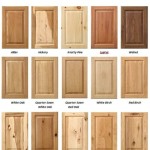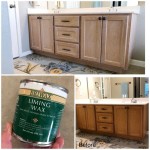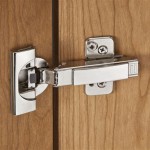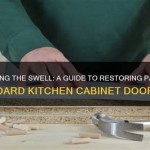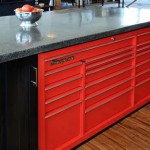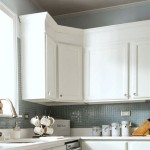What Is The Best Polyurethane For Painted Kitchen Cabinets?
The selection of the appropriate polyurethane finish for painted kitchen cabinets is a critical decision that significantly impacts the durability, aesthetics, and longevity of the cabinetry. Polyurethane serves as a protective layer, shielding the underlying paint from moisture, scratches, and everyday wear and tear common in a kitchen environment. Considering the myriad of polyurethane options available, understanding their properties and suitability for painted surfaces is essential for achieving optimal results.
This article aims to provide a comprehensive overview of the key factors to consider when choosing the best polyurethane for painted kitchen cabinets. It will delve into the different types of polyurethane, their characteristics, application techniques, and potential drawbacks, enabling informed decision-making for both professional cabinet finishers and homeowners undertaking DIY projects.
Understanding the Types of Polyurethane
Polyurethane coatings are broadly classified into two main categories: oil-based and water-based. Each type offers distinct advantages and disadvantages, influencing their suitability for various applications, including painted kitchen cabinets.
Oil-based Polyurethane: This type of polyurethane is known for its exceptional durability and resistance to abrasion. It typically provides a warmer, amber hue to the underlying paint, which can enhance the overall aesthetic, particularly for traditional cabinet styles. Oil-based polyurethane offers excellent leveling properties, resulting in a smooth, even finish. However, it contains higher levels of volatile organic compounds (VOCs), leading to a strong odor during application and requiring more rigorous safety precautions and ventilation. It also tends to yellow over time, especially with lighter paint colors. The drying time for oil-based polyurethane is considerably longer than water-based alternatives, requiring more time between coats and extending the overall project duration. Clean-up requires solvents such as mineral spirits, which adds to the complexity and cost of the project.
Water-based Polyurethane: Water-based polyurethane has gained popularity due to its low VOC content, making it a more environmentally friendly and health-conscious choice. It dries clear, preserving the original color of the painted cabinets without the yellowing effect associated with oil-based finishes. Water-based polyurethane dries quickly, allowing for multiple coats to be applied within a shorter timeframe. It is also easier to clean, requiring only soap and water. While generally considered less durable than oil-based options, advancements in water-based polyurethane formulations have significantly improved their scratch and abrasion resistance. Certain high-performance water-based polyurethanes are now specifically designed for demanding applications like kitchen cabinets, offering comparable durability to oil-based counterparts. However, they may require more coats to achieve the same level of protection and can be more prone to raising the grain of the wood, potentially requiring additional sanding between coats.
Key Considerations When Selecting Polyurethane
Choosing the best polyurethane for painted kitchen cabinets requires careful consideration of several key factors, including the desired aesthetic, durability requirements, application environment, and personal preferences regarding ease of use and environmental impact.
Desired Sheen Level: Polyurethane is available in various sheen levels, ranging from matte to high-gloss. The choice of sheen level significantly affects the overall appearance of the cabinets. Matte finishes offer a subtle, non-reflective look, concealing imperfections and creating a more understated elegance. Satin finishes provide a slightly higher sheen, offering a balance between durability and aesthetics. Semi-gloss finishes are more reflective, enhancing the color and adding a touch of sophistication. High-gloss finishes offer the highest level of reflectivity, creating a dramatic and modern look, but they also highlight imperfections more readily. The selection of sheen level should complement the style of the kitchen and the overall aesthetic vision.
Durability Requirements: Kitchen cabinets are subjected to frequent use and exposure to moisture, grease, and cleaning products. Therefore, the polyurethane finish should offer adequate protection against these elements. Consider the level of traffic and potential for wear and tear in the kitchen. For high-traffic kitchens with frequent use, a more durable polyurethane, such as a high-performance water-based or a traditional oil-based option, may be necessary. For kitchens with less demanding use, a standard water-based polyurethane may suffice.
Application Method: The application method can influence the choice of polyurethane. Polyurethane can be applied using a brush, roller, or sprayer. Brushing is a common method for smaller projects and offers good control. Rolling is suitable for larger surfaces but may leave a textured finish if not applied carefully. Spraying provides the smoothest and most even finish but requires specialized equipment and proper ventilation. The chosen application method should be compatible with the type of polyurethane and the skill level of the applicator. Water-based polyurethanes tend to be more forgiving when applied with a brush or roller, while oil-based polyurethanes may require more experienced application techniques to avoid brush marks.
VOC Content and Environmental Concerns: Volatile organic compounds (VOCs) are emitted by certain polyurethane coatings and can contribute to air pollution and potential health concerns. Water-based polyurethanes generally contain significantly lower VOC levels compared to oil-based options, making them a more environmentally friendly and health-conscious choice. Consider the VOC content of the polyurethane and choose a low-VOC option whenever possible, especially if you are sensitive to odors or have respiratory issues.
Specific Polyurethane Products and Their Characteristics
Numerous polyurethane products are available on the market, each with its own unique characteristics and suitability for painted kitchen cabinets. Examining specific products can further clarify the nuances of selecting the optimal finish.
Minwax Polycrylic Protective Finish: This water-based polyurethane is a popular choice for DIY projects due to its ease of application and low odor. It dries quickly and clear, making it suitable for light-colored painted cabinets. While it offers good protection against scratches and spills, it may not be as durable as some other options for high-traffic kitchens. It is often chosen for its affordability and availability.
General Finishes High Performance Water Based Topcoat: This product is a highly regarded water-based polyurethane known for its exceptional durability and clarity. It provides a hard, protective finish that resists scratches, stains, and fading. It is a popular choice among professional cabinet finishers and DIY enthusiasts seeking a high-quality, long-lasting finish. Its self-leveling properties also contribute to a smooth, professional-looking result even for those with less experience.
Rust-Oleum Ultimate Polyurethane: This oil-based polyurethane offers excellent durability and a warm, amber hue. It provides a tough, protective finish that resists scratches, abrasion, and chemicals. However, it has a higher VOC content and requires longer drying times. It is a suitable option for those seeking a traditional look and exceptional durability, provided proper ventilation and safety precautions are observed.
Varathane Water-Based Polyurethane: Varathane offers various water-based polyurethane options, including formulations specifically designed for floors and furniture, which can also be suitable for cabinets. These products are known for their durability and ease of application. They typically dry clear and offer good resistance to scratches and stains. Always check the product label to ensure it's appropriate for use on painted surfaces.
When evaluating specific polyurethane products, it is crucial to read product reviews, consult with experienced finishers, and consider performing a test application on a small, inconspicuous area of the cabinet to assess the appearance and performance before committing to the entire project.
Proper Surface Preparation: Regardless of the polyurethane chosen, proper surface preparation is paramount for achieving a durable and aesthetically pleasing finish. This includes cleaning the cabinets thoroughly to remove any grease, dirt, or contaminants. Sanding the painted surface lightly to create a smooth, even surface is also essential. Filling any imperfections, such as dents or scratches, with wood filler and sanding it smooth is crucial for a flawless finish. Priming the surface with a compatible primer may be necessary, especially when switching between different types of paint or polyurethane. Proper surface preparation ensures optimal adhesion and prevents imperfections from showing through the final finish.
Application Techniques for Optimal Results: The application technique plays a significant role in the final outcome of the polyurethane finish. Apply thin, even coats of polyurethane, avoiding excessive build-up that can lead to drips, runs, and uneven drying. Allow each coat to dry completely before applying the next. Lightly sand between coats with fine-grit sandpaper (e.g., 320-grit or higher) to remove any imperfections and create a smooth surface for the subsequent coat. Use a high-quality brush, roller, or sprayer designed for applying polyurethane. Clean the application equipment thoroughly after each use to prevent the polyurethane from hardening and damaging the equipment. Maintain a consistent application speed and pressure to ensure a uniform finish. Avoid applying polyurethane in direct sunlight or humid conditions, as this can affect the drying time and quality of the finish.
Troubleshooting Common Problems: Even with careful planning and execution, problems can sometimes arise during the polyurethane application process. Common issues include brush marks, air bubbles, drips, and uneven sheen. Brush marks can be minimized by using a high-quality brush, applying thin coats, and sanding lightly between coats. Air bubbles can be reduced by avoiding excessive stirring of the polyurethane and allowing it to settle before application. Drips can be prevented by applying thin coats and wiping away any excess polyurethane immediately. Uneven sheen can be caused by inconsistent application or variations in the surface preparation. Addressing these problems promptly and effectively can help salvage the project and achieve a professional-looking finish.
Ultimately, the "best" polyurethane for painted kitchen cabinets is subjective and depends on the specific requirements and priorities of the project. By carefully considering the factors outlined in this article, individuals can make informed decisions and select the polyurethane that best suits their needs, leading to beautiful and durable kitchen cabinets that will last for years to come.
8 Best Cabinet Finishes Paints Stains Glazes And More Vevano

Polyurethane On Painted Cabinets For Durable Shiny Finish 2024

The Best Paint For Kitchen Cabinets

Best Paint For Cabinets And Doors

Low Maintenance Why I Love Polyurethane Kitchens Harrington

Should You Use A Paint Finish For Kitchen Cabinets

How To Paint Kitchen Cabinets In 7 Simple Steps

Painting Cabinets Your Questions Answered Honey Built Home

The Best Kitchen Cabinet Paint Brand Honest Review

The Best Finishes For Kitchen Cabinets Kitchens By Kathie
Related Posts


